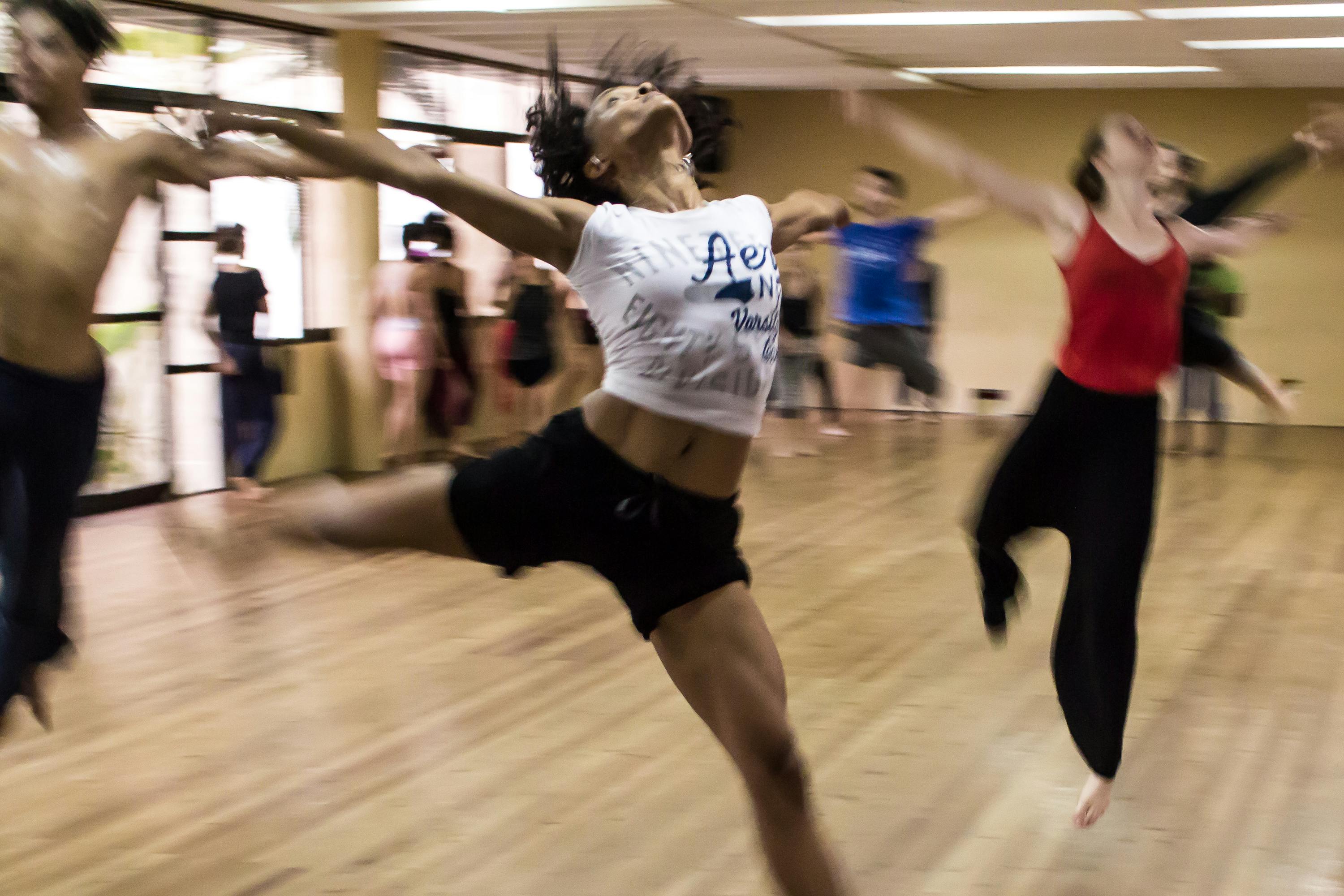- 15 Apr, 14
- by niaja
- in Newsletter
-
 0
0
-

 0
0
Learning Math Through Dance: A Child’s Journey
By: Ginette Samwel
Hi. My name is Ginette and I have twin girls, Tamerate and Tarikua. They’re 7 years old. On Wednesdays I take them to their dance lessons after school. Tamerate takes jazz ballet and Tarikua takes acro dance. In the room where the parents wait there are television monitors that allow us to watch the children’s progress. In the beginning I entertained all sorts of grandiose notions about their ability, which were quickly dissipated as I watched them awkwardly learn the dance moves and combinations. Yikes! For Tamerate just paying attention has been a challenge. For Tarikua learning to do a front flip and land in a perfect back bend and get up from it has been her challenge.
 As I have watched them over the months, I find myself amazed at the geometry and physics they are learning without realizing it. In order for Tarikua to do a backbend she has had to learn how to distribute her weight so she doesn’t injure her back or hit her head as she bends backwards. Then there is the equally tricky movement to pull herself back to a vertical position by shifting all of her weight with force onto her feet so her hands can release their hold on the floor and lift her back up. For Tamerate, learning the sequence of movements and following the rhythm allows her to integrate her movements with her fellow dancers. Ever so slowly I can finally see the choreography her teacher has constructed. I marvel at how the young dancers move through space making use of both positive and negative space while keeping time.
As I have watched them over the months, I find myself amazed at the geometry and physics they are learning without realizing it. In order for Tarikua to do a backbend she has had to learn how to distribute her weight so she doesn’t injure her back or hit her head as she bends backwards. Then there is the equally tricky movement to pull herself back to a vertical position by shifting all of her weight with force onto her feet so her hands can release their hold on the floor and lift her back up. For Tamerate, learning the sequence of movements and following the rhythm allows her to integrate her movements with her fellow dancers. Ever so slowly I can finally see the choreography her teacher has constructed. I marvel at how the young dancers move through space making use of both positive and negative space while keeping time.
Recently, I had a conversation with a woman who counsels parents on how to cope with problematic behavior. Her specialty is with children who are just about to enter Middle School. That is usually the time when standardized test take on great importance as an indicator of future college preparation. That is also usually the age when the math starts to become more complicated and children are expected to  become fluent in problem solving. Kathy, my friend, says it is often the case that certain topics are presented to them in a way that does not reflect how they learn. Some children are visual learners. Some children are auditory learners. Some children need to have something relatable. “Instead of getting frustrated with your child,” she advises, “try presenting the material in a manner that is relatable to the child.” Good advice, I suppose
become fluent in problem solving. Kathy, my friend, says it is often the case that certain topics are presented to them in a way that does not reflect how they learn. Some children are visual learners. Some children are auditory learners. Some children need to have something relatable. “Instead of getting frustrated with your child,” she advises, “try presenting the material in a manner that is relatable to the child.” Good advice, I suppose
Right now Tamerate and Tarikua are just mastering telling time and adding and subtracting. Of course the schoo
lwork they receive is pretty straightforward, but I suspect this is not how my girls learn. When they dance they move. Really move. If I tell them to double something, they still have to think twice or three times before it registers what I have asked them to do. On the dance floor they understand innately when they must increase the n
umber of steps to be in synch with the music and how to decrease the number steps. Some day when they are ready to tackle geometry, instead of showing circles and lines, I may remind them of the dance floor and how choreography is a way of understanding how shapes and lines exist on a plane.
Math and science are not exclusive to those in science, technology, engineering and math. Math and science are as natural and essential to life as the simple act of breathing: modulating and establishing a cadence to each breath depending on one’s surroundings and circumstances.
Here are some links I looked at which inspired this article. Happy reading.
http://blog.ted.com/2012/11/21/8-math-talks-to-blow-your-mind/
http://www.axissyllabus.com/page51.php
http://math2033.uark.edu/wiki/index.php/Dance_and_Math
i-Trek Volunteer - Kelvin Frazier
April Newsletter
Make sure to support i-Trek…
- with a donation
- with your time
- with sponsorship